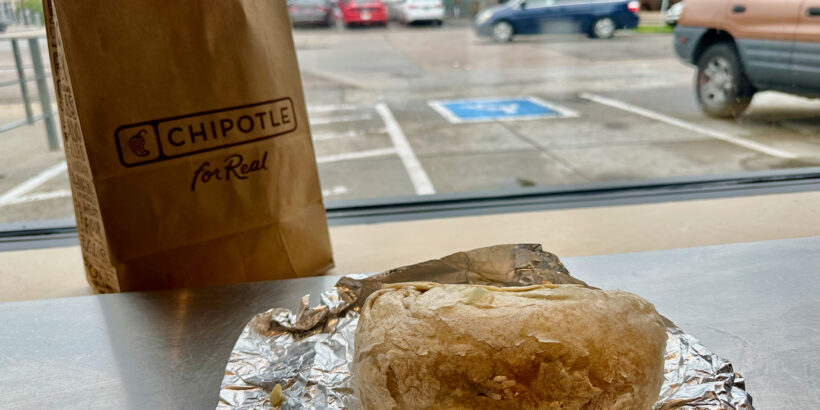Virtually anywhere you go in the US, it’s not hard to find a Chipotle nearby.
However, this colossal chain had quite humble beginnings. If you ever find yourself in the Denver area, it’s worth considering a visit to the original Chipotle location, where it all began.
Below, I’ll discuss visiting the original location and provide you with a glimpse into the history of Chipotle’s remarkable ascent.
Where is the original Chipotle location?
You can find the original Chipotle Mexican Grill restaurant nestled in the University of Denver neighborhood at 1644 E Evans Ave, Denver, CO 80210. It’s right next-door to one of the well-known marijuana dispensaries, Starbuds.
Related Denver articles:
- The Denver Trolley Review: Relive The Glory Days of the Streetcar
- Dinosaur Ridge Review: A Prehistoric Trek with World-Class Tracks
- Denver Mint Review: A Billion Reasons to Visit This Shiny Establishment
- Colorado State Capitol Tour Review: Stunning Architecture & Historic Corridors
- Denver’s Civic Center Park Guide: Impressive Monuments, Art, & Architecture
- Denver Confluence Park Ultimate Guide: Historic Waterways & Trails Await
- Colorado Music Hall of Fame Review: Discover Musical Legends
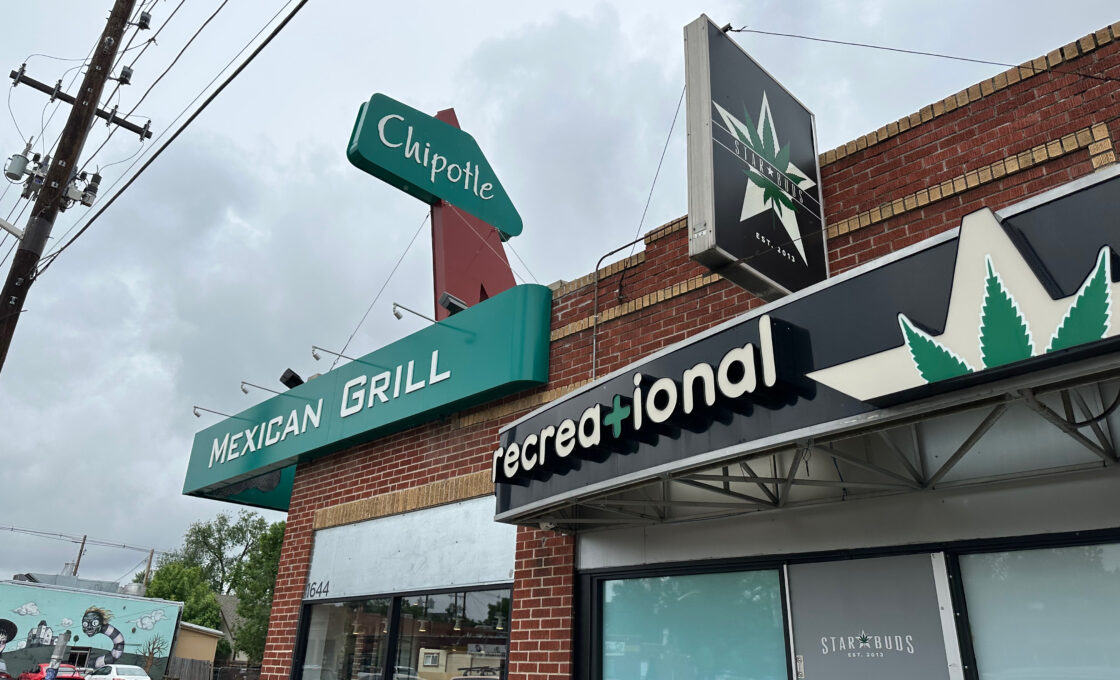
A brief history of the quick rise of Chipotle
You could say the Chipotle story started in San Francisco in 1993.
There, Founder Steve Ells, donned the apron of a line cook, and amidst the tantalizing aromas of the Mission District restaurants, witnessed the popularity of the taquerías and legendary San Francisco burritos.
In 1993, drawing inspiration from his experiences in San Francisco, Steve Ells ventured into the heart of Denver, Colorado, to bring his own culinary vision to life. Little did he know that this humble endeavor would ignite a wildfire of success. The inaugural Chipotle Mexican Grill burst onto the scene, becoming an instant hit.
Originally, Ells had grand aspirations of utilizing the proceeds from his maiden Chipotle venture to establish an upscale dining establishment. However, as the masses flocked to savor the flavors of Chipotle, he shifted his focus entirely to his Mexican grills. Just two years later, in 1995, a second Chipotle store emerged, signaling the rapid expansion to come.
Chipotle quickly spread its influence beyond Colorado’s borders. In 1998, the first Chipotle restaurant outside of Colorado opened, to the pleasure of diners in Kansas City, Missouri.
But the big turning point for Chipotle came in 1998, when the fast-food giant McDonald’s recognized the extraordinary potential of the burgeoning Mexican grill concept. In a transformative move, McDonald’s made a significant investment in Chipotle, soon becoming the company’s largest investor.
McDonald’s injected a surge of momentum into Chipotle’s expansion plans. In the span of just seven years, from 1998 to 2005, the number of Chipotle restaurants skyrocketed from a mere 16 to an astonishing 500 and beyond.
By 2005, McDonald’s reportedly had a 90% stake in Chipotle’s business.
Eventually, McDonald’s would divest its ownership, citing its side ventures like Chipotle as a distraction. They wanted to put all of their efforts into the McDonald’s brand.
But there also appears to have been differences between Chipotle and McDonald’s. McDonald’s had its own vision for Chipotle’s future, which included implementing changes such as adding drive-thrus, introducing a breakfast menu, and potentially altering the brand name to “Chipotle Fresh Mexican Grill.”
The contrasting approach to food between Chipotle and McDonald’s played a significant role in the eventual separation of the two companies.
Chipotle operates in a category known as “fast casual,” which sets it apart from traditional fast food establishments. The fast casual segment places a stronger emphasis on utilizing high-quality, fresh ingredients and prioritizing sustainability, distinguishing it from the typical fast food model.
Chipotle’s commitment to sourcing high-quality ingredients and its “food with integrity” philosophy resonated with a growing number of consumers seeking healthier and more sustainable dining options.
The brand’s emphasis on responsible sourcing, such as using naturally raised meats and organic produce, appealed to customers who valued transparency and environmentally-conscious practices.
In contrast, McDonald’s (as we all know) operates within the realm of true fast food, which focuses on quick service and affordability. While McDonald’s had its own successful model and practices, the differences in food philosophy and approach ultimately led to a divergence between the two companies.
In the end, McDonald’s missed out on some serious guacamole. Some estimate that McDonald’s lost out on around $50 billion in earnings by getting out.
Chipotle has faced a lot of challenges over the years. From the notorious foodborne illness outbreaks in 2015, famously associated with cases of E. coli and norovirus, to legal battles concerning labor practices, they have had their fair share of controversy.
Indeed, like many large companies, Chipotle has had to face up to its own imperfections. However, it’s hard to deny the sheer impressiveness of the empire they have built. Today, Chipotle’s presence extends far and wide, with over 3,100 restaurants in the United States.
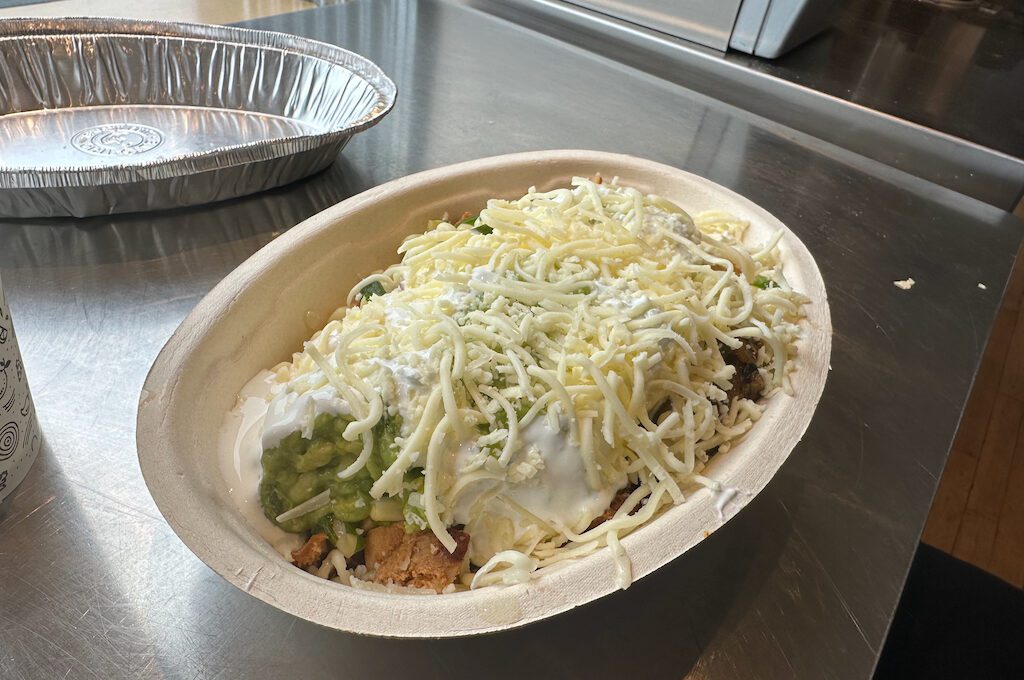
Visiting the original Chipotle location
We pulled up around noon and easily found street parking. There are a couple of parking spots just outside the restaurant and some along the street but be sure to note the one hour limit (not that you need one hour to scarf down those tantalizing burritos, bowls, and tacos.)
As you walk up to the restaurant, you’ll notice how it looks nothing like any other modern Chipotle, as its vintage charm remains well intact. The original building was a Dolly Madison ice cream shop which you can kind of get the vibe of when you step inside.
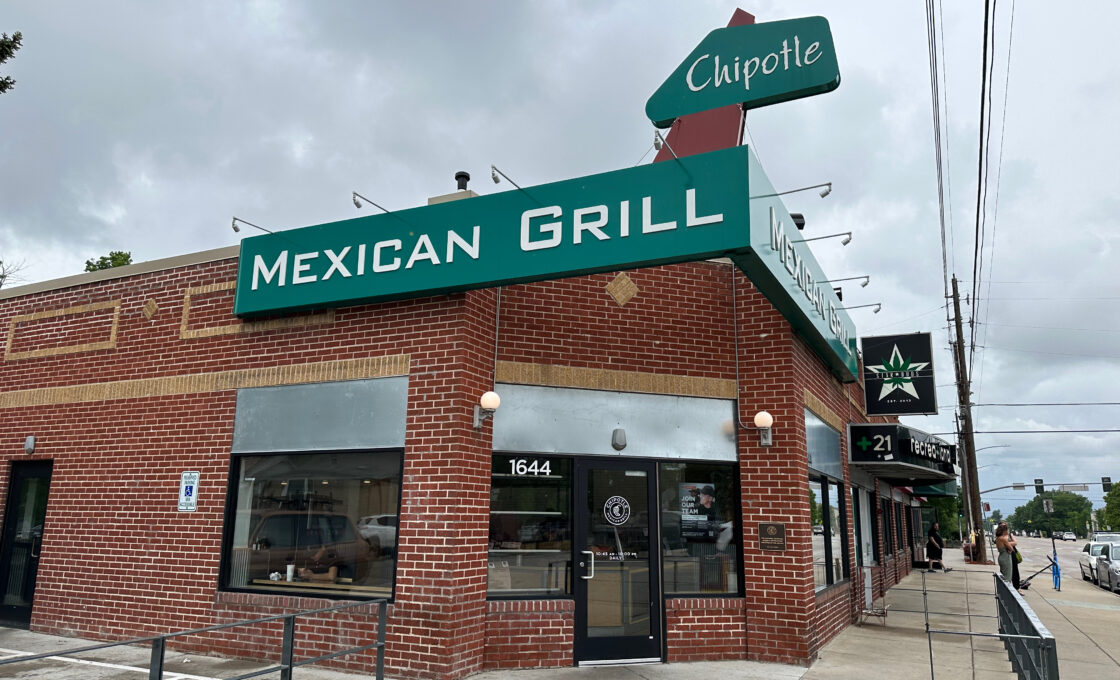
One peculiar quirk about Chipotle is its opening time, set at the rather unconventional hour of 10:45 AM. It stays open late until 10 PM.
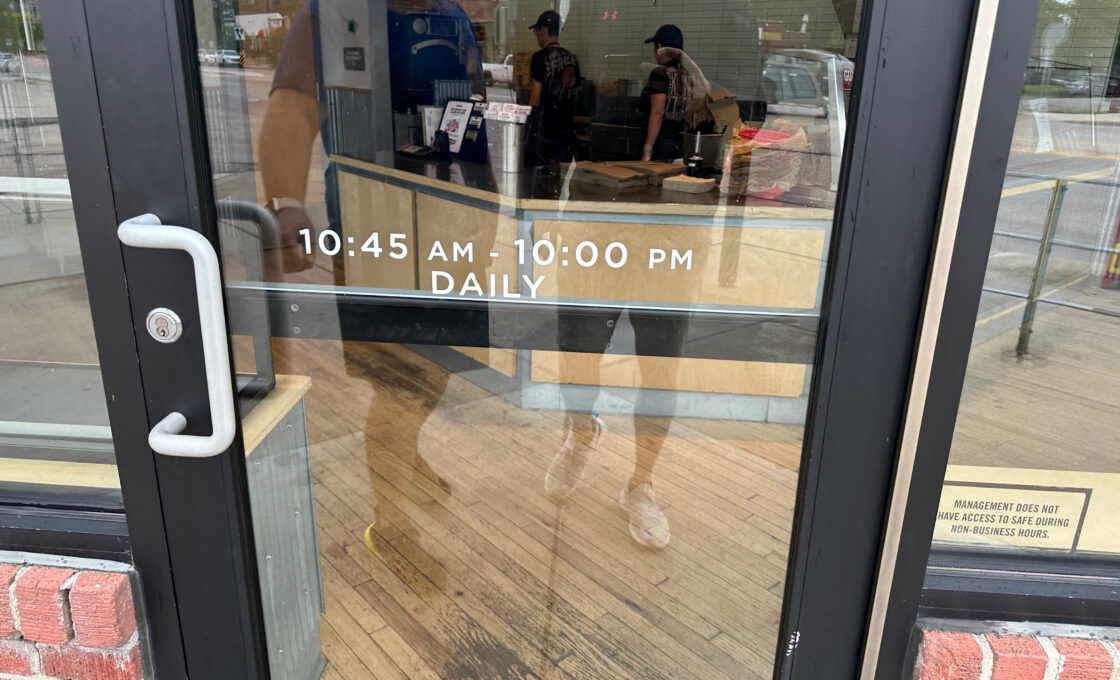
Step inside, and you’ll find that the original Chipotle restaurant retains much of its traditional appearance, albeit in a more compact form.
The space is limited, with only four cozy barstool areas and a handful of chairs for dine-in customers. Don’t expect any fancy outdoor patios or sprawling seating arrangements here. It seems like many people opt for takeout from this location, given its modest size.
In our case, being in the presence of the first-ever Chipotle establishment, we couldn’t resist the urge to dine in. To our delight, the restaurant wasn’t crowded at all, allowing us to enjoy our meal without any hassle.
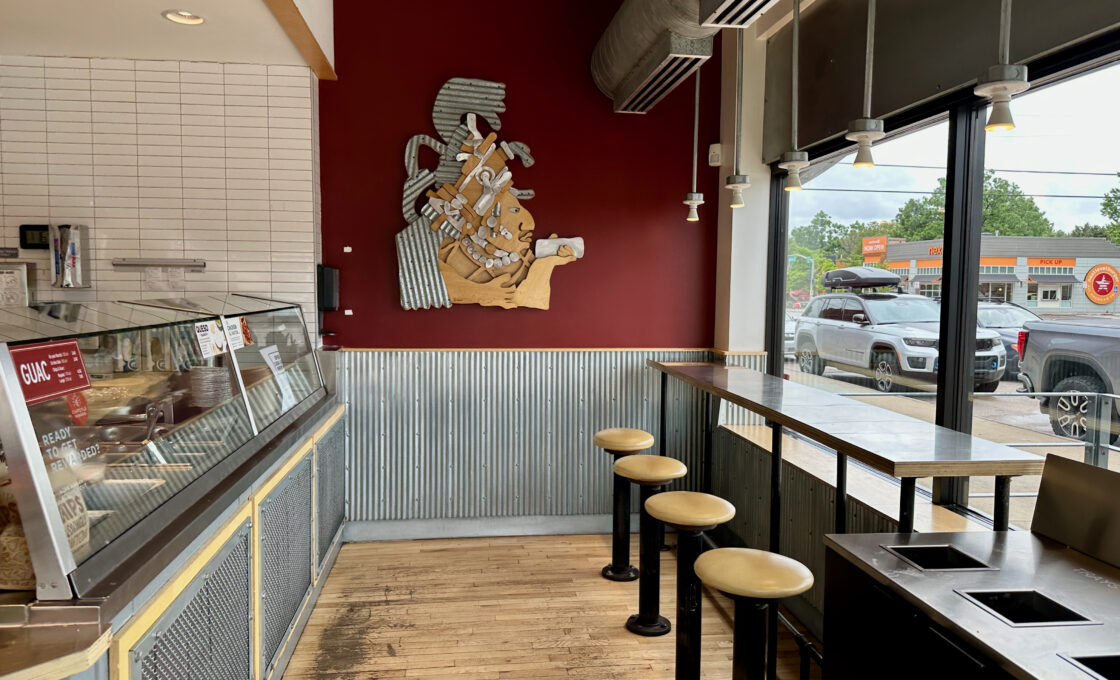
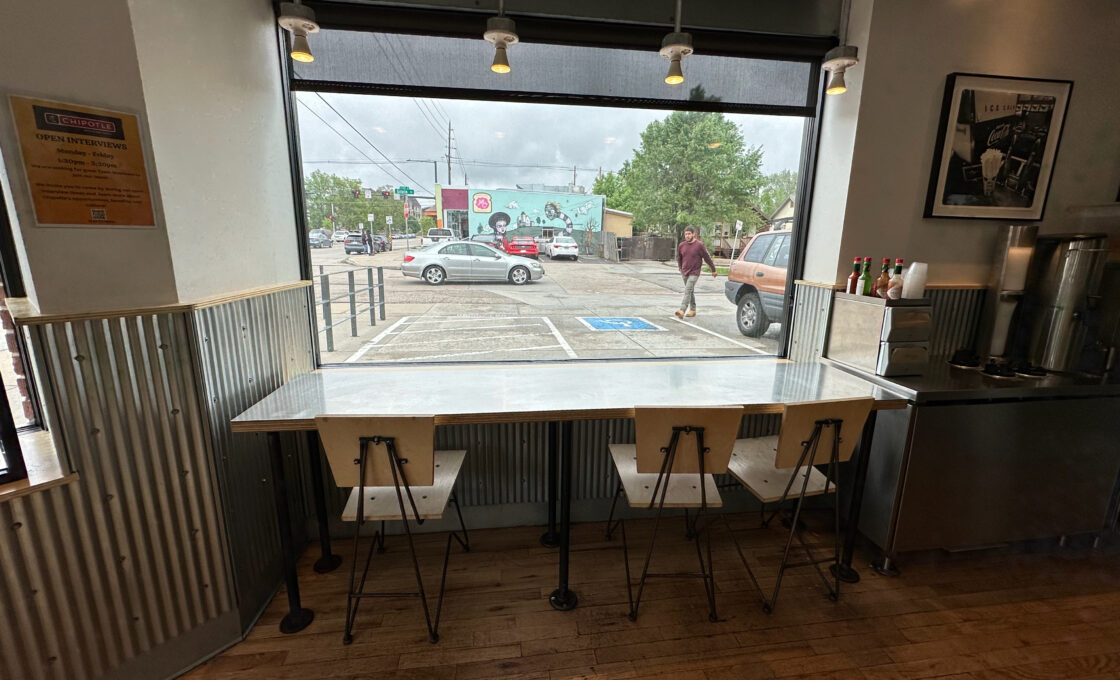
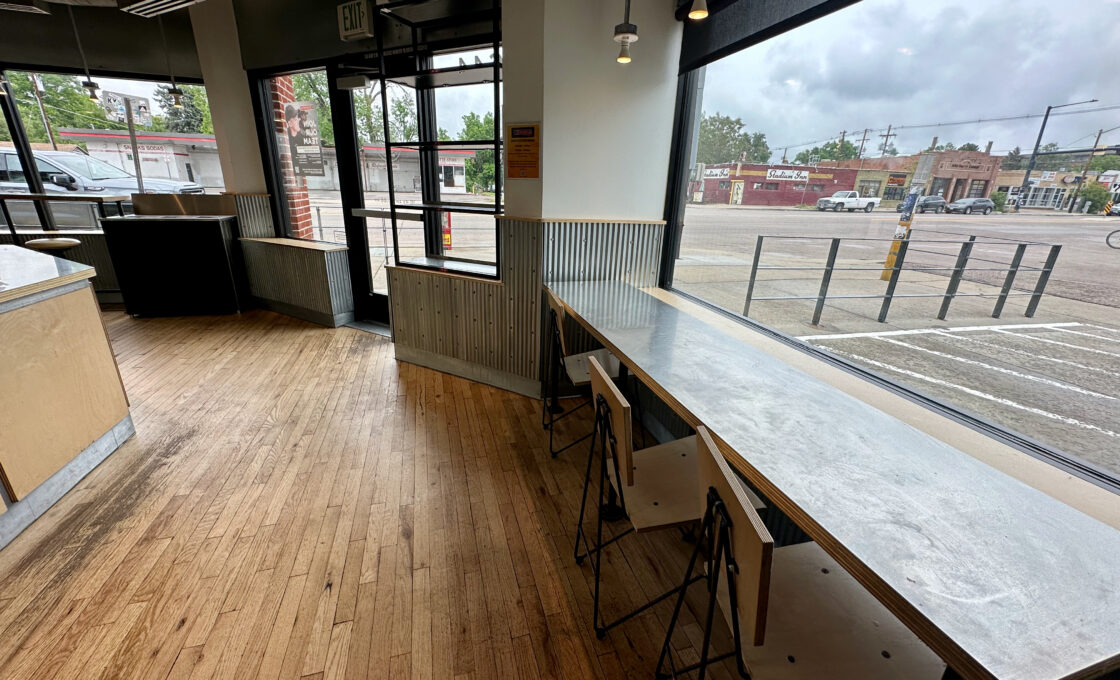
I know Chipotle workers have a reputation for being extremely efficient but the workers that were on duty at the time we visited were insanely efficient and seemingly working with laser precision. They probably could have made my burrito blindfolded.
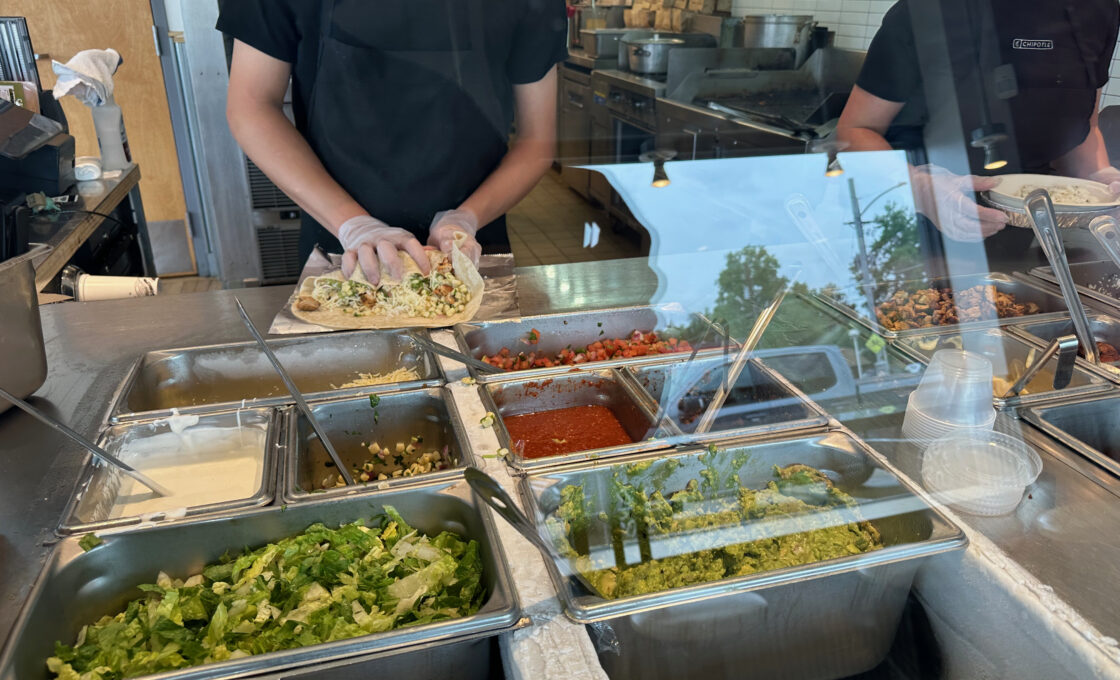
There is a drink station for soda water and some lemonade and other juices and a couple of bathrooms towards the back but that’s about all that you’ll find inside this smaller venue.
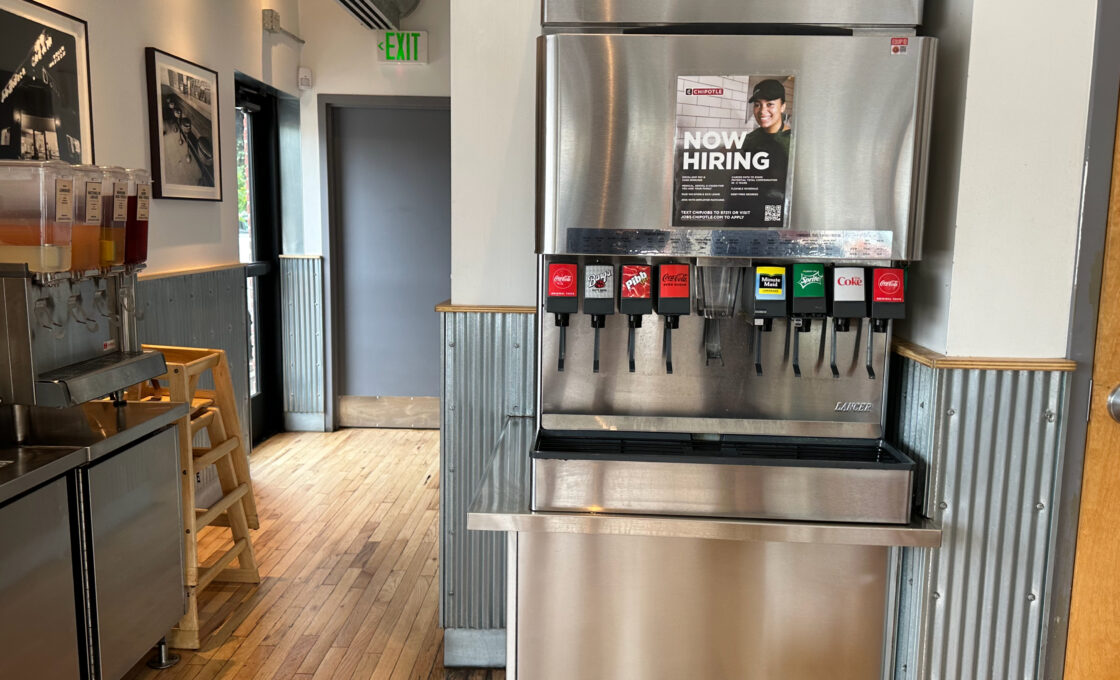
After a considerable hiatus from munching on a chipotle burrito (my usual go-to being the beloved bowls), I knew that visiting the original Chipotle required a throwback to the classics. So I went with a good old-fashioned burrito. Just like old times, it hit the spot.
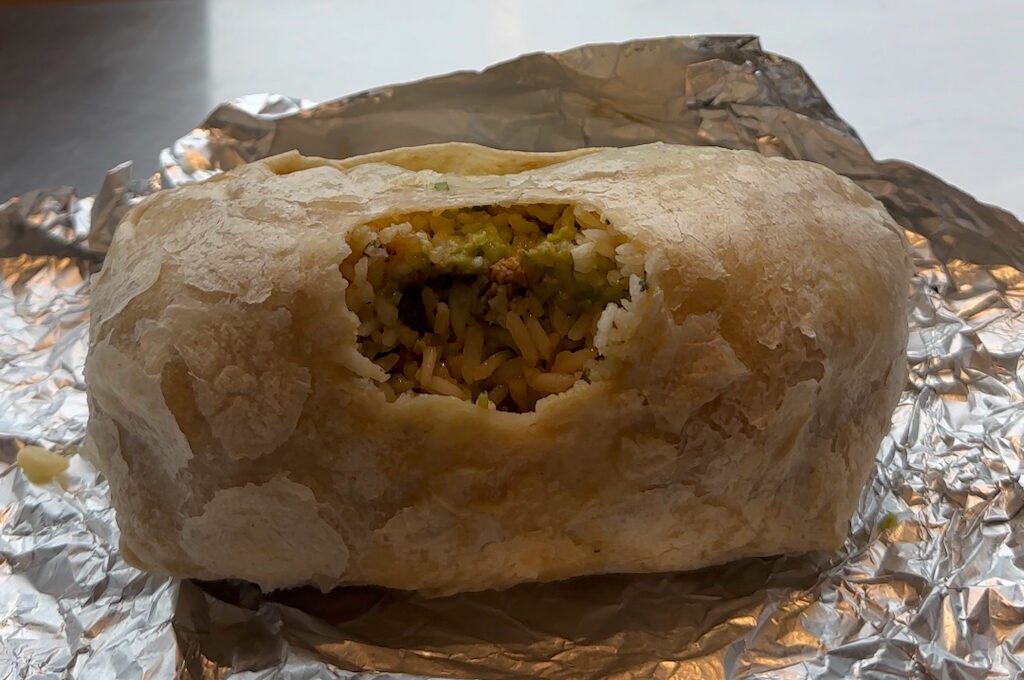
Before you head back to your vehicle, make sure that you stop by the official plaque near the door so that you can take your picture in front of the original Chipotle, “where a revolution wrapped in foil began.”
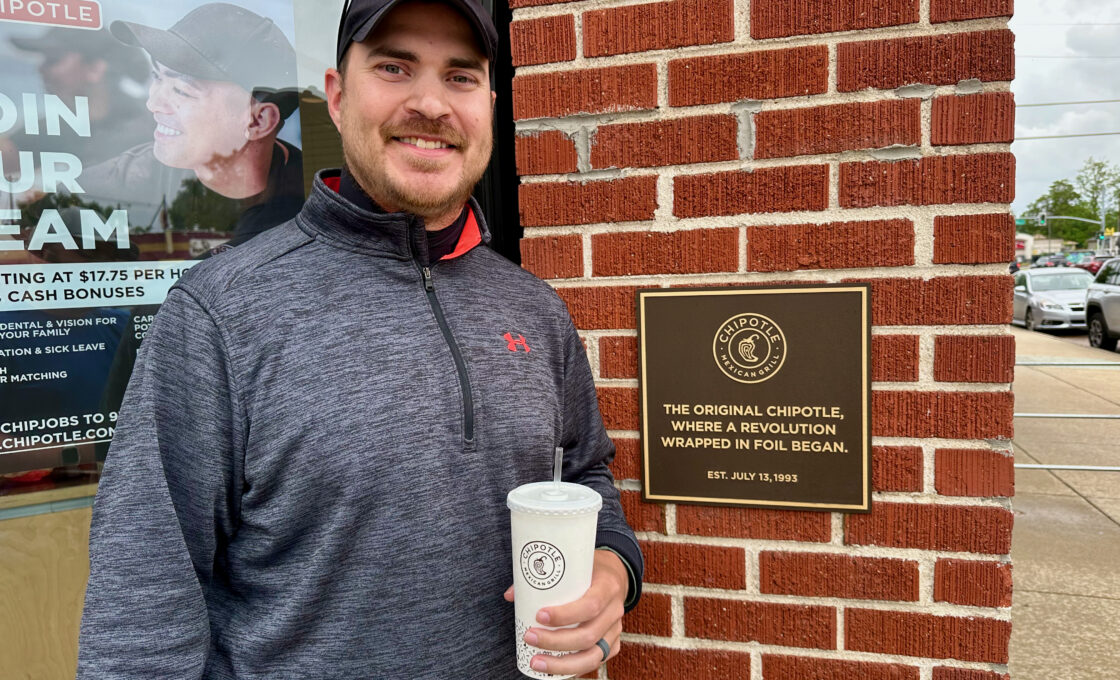
Final word
Back in the day, I went through a passionate chipotle phase, with their burritos becoming my frequent choice of sustenance during countless law school meals. So I thoroughly enjoyed being able to set foot in the original establishment. The Chipotle story, in my opinion, is a captivating success narrative full of class entrepreneur challenges, obstacles, and plot twists and one full of valuable lessons.
Daniel Gillaspia is the Founder of UponArriving.com and the credit card app, WalletFlo. He is a former attorney turned travel expert covering destinations along with TSA, airline, and hotel policies. Since 2014, his content has been featured in publications such as National Geographic, Smithsonian Magazine, and CNBC. Read my bio.

